![]()
![]()
![]()
Use LEFT and RIGHT arrow keys to navigate between flashcards;
Use UP and DOWN arrow keys to flip the card;
H to show hint;
A reads text to speech;
62 Cards in this Set
- Front
- Back
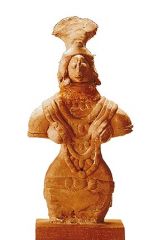
|
Title: Mother Goddess Figurine Artist: Unknown Culture: Indus Valley |
|
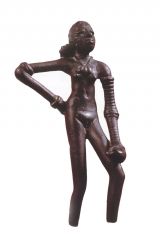
|
Title: Figurine of a Dancing Girl Artist: Unknown Culture: Indus Valley |
|
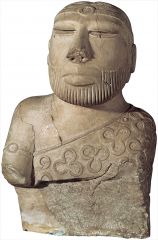
|
Title: Torso of a Priest-King Artist: Unknown Culture: Indus Valley |
|
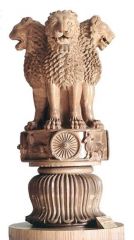
|
Title: Lion Capital from an Ashoka Column Artist: Unknown Culture: Early Buddhism |
|
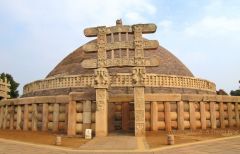
|
Title: Sanchi Stupa Artist: Unknown Culture: Early Buddhism |
|

|
Title: Bracket of a Woman and a Mango Tree (From East Gateway at Sanchi Stupa) Artist: Unknown Culture: Early Buddhism |
|

|
Title: Great Departure of the Buddha (From East Gateway at Sanchi Stupa) Artist: Unknown Culture: Early Buddhism |
|
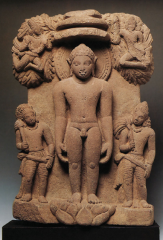
|
Title: Jina with Attendants Artist: Unknown Culture: Early Jainism |
|
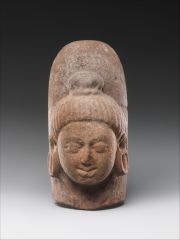
|
Title: Linga with the Face of Shiva Artist: Unknown Culture: Gupta |
|
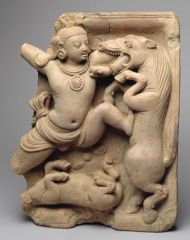
|
Title: Krishna Killing the Horse Demon Artist: Unknown Culture: Gupta |
|

|
Title: Vishnu Reclining on the Serpent Ananta (from Deogarh Temple) Artist: Unknown Culture: Gupta |
|

|
Title:Standing Buddha Artist: Unknown Culture: Gupta |
|

|
Title:Shiva Relief (from Elephanta) Culture: Medieval |
|

|
Title:Descent of the Ganges Relief (from Mamallapuram) Artist: Unknown Culture: Medieval |
|
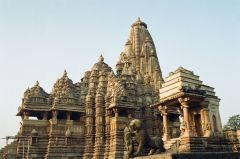
|
Title:Kandariya Temple Artist: Unknown Culture: Medieval |
|

|
Title: Shiva as the Lord of Dance Artist: Unknown Culture: Medieval |
|

|
Title: Qutb Minar (Delhi) Artist: Unknown Culture: Indian Islamic |
|
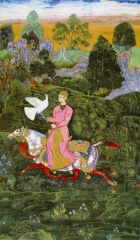
|
Title:Ibrahim Adil Shah II Hawking Artist: Farrukh Husain Culture: Indian Islamic |
|
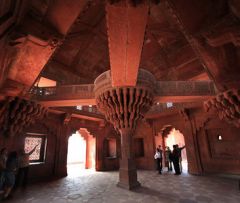
|
Title:Private Audience Hall (Fatehpur Sikri) Artist: Unknown Culture: Mughal Empire |
|
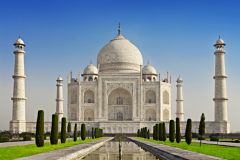
|
Title: Taj Mahal Artist: Unknown Culture: Mughal Empire |
|
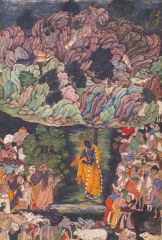
|
Title: Krishna Holds Up Mount Govardhan (from the Harivamsa) Artist: Unknown Culture: Mughal Empire |
|

|
Title: Jahangir Preferring a Sufi Shaykh to Kings Artist: Bichitr Culture: Mughal Empire |
|
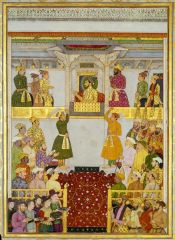
|
Title:Europeans Bringing Gifts to Shah Jahan (from the Padshahnama) Artist: Unknown Culture: Mughal Empire |
|

|
Title:The Deposition from the Cross Artist: Unknown Culture: Mughal Empire |
|
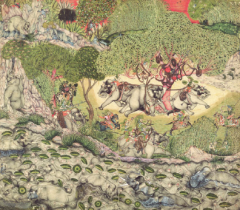
|
Title:An Elephant Hunt Artist: Niju Culture: Rajput Courts |
|

|
Title:Lady Impey Supervising Her Household Artist: Shaykh Zayn al-Din Culture: British Imperial |
|

|
Title:View of a Mosque and Gateway (at Motijhil) Artist: Sita Ram Culture: British Imperial |
|
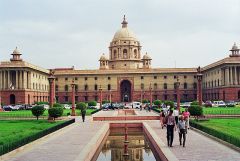
|
Title: Viceroy’s House Artist: Lutyens Culture: British Imperial |
|

|
Title:Woman Holding a Piece of Fruit Artist: Varma Culture: British Imperial |
|
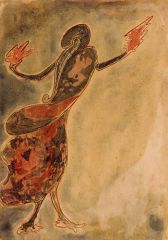
|
Title: Dancing Woman Artist: Tagore Culture: British Imperial |
|

|
Title:Arjuna with Chariot Artist:M.F. Husain Culture: Contemporary |
|

|
Title: Hamam Khana Artist:Khakhar Culture: Contemporary |
|
|
Name the two best known settlements of the Indus ValleyCivilization.
|
Harappan and Mohenjo Daro
|
|
|
What might Harappan stamp seals depicting figures in yogicpostures reveal to us about the origins of yoga?
|
It could have religious significance
|
|
|
What is a votive offering?
|
Token of worship
|
|
|
What were the four castes (social groups) that existed during the Vedic Period?
|
Priestly, Warriors, Merchants, and Peasants
|
|
|
Who was Siddhartha Gautama?
|
The founder of early Buddhism (Buddha)
|
|
|
Describe the basic form and function of a stupa.
|
A stupa is a dome shaped burial mound, surrounded by decorated gates, and topped with a mast and umbrellas
|
|
|
Why was the emperor Ashoka of the Maurya Empire important to the development of Buddhism?
|
He adopted the ideas of Buddhism and put his money into religious buildings and art, and made it more of an “official” religion
|
|
|
What is the difference between a relief sculpture and a freestanding sculpture?
|
A freestanding sculpture is finished and open on all sides, like a statue. A relief sculpture is carved into something else, like a wall
|
|
|
How is the Buddha represented in early Buddhist works of art (such as Great Departure of the Buddha)?
|
Buddha is not pictured in early works of art, his presence is only implied. It was considered inappropriate
|
|
|
What is the significance of the elongated earlobes typical in images of the Buddha and Jinas?
|
It reminds you that he was once a prince, before abandoning earthly ways
|
|
|
What is the relationship between Hindu art and meditation?
|
Enlightenment/release from the cycle of rebirth |
|
|
Who are the three core Hindu gods?
|
Shiva, Vishnu, Great Goddess |
|
|
What shared belief is at the core of Hinduism, Buddhism, and Jainism?
|
Enlightenment and peace |
|
|
What is a linga?
|
Statue of a penis |
|
|
The inner chamber of a Hindu temple is called the garbhagriha. What ritual purpose does this chamber serve?
|
Home of the statue they circle around |
|
|
Describe one of the likely explanations for the erotic imagery at Kandariya Temple (as well as at many other Hindu temples).
|
Represents fertility and creation |
|
|
Briefly describe the lost-wax casting process.
|
Make figure out of wax, create clay mold, cast in bronze |
|
|
Why do the earliest examples of Indian illuminated manuscripts date from no earlier than the tenth century?
|
Manuscripts were originally printed on palm leaf paper which did not last through time |
|
|
Describe the process used to create patolu cloth.
|
Threads are dyed before being woven, color is strong on both sides |
|
|
Define the following elements of Mosque architecture:mihrab, qibla, minaret
|
Mihrab - is a semicircular niche in the wall of a mosque, indicates the direction of Qibla Qibla - is the direction that should be faced when a Muslim prays Minaret - tall tower |
|
|
Why are vegetal and abstract geometric motifs so common in the decoration of mosques and Qur’ans?
|
Islam is aniconic, it is inappropriate to show images of Allah or prophets |
|
|
What is a gopura and what form did it take in the Hindu lands of the Vijayanagara kingdom (and its dependents) in the early modern period?
|
A gopura is an ornate tower at the entrance of a temple. A large, brightly painted gopura, with 1,500 figures. |
|
|
Which culture’s artistic style fused with the native Indian styles to form the distinctive Mughal style of painting? How did this fusion occur?
|
Persian influence was brought through Islamic religion |
|
|
Why are the Hindu gods Ganesh and Sarasvati depicted on the frontispiece of a 19th century copy of the Dasam Granth, a Sikh religious book?
|
They are used as symbols, rather than gods |
|
|
Describe the style of art referred to as ‘Company Painting’.
|
Indian artists painting for European patrons |
|
|
What was the purpose of paintings (such as ‘Eight Sikh Courtiers and Servants of the Raja of Patiala’ from the Fraser Album) that were made for British patrons that depict groups of Indian sitters in traditional or daily dress?
|
To show the British what Indian life was like in India; to depict them as uncivilized, that they "need" the British |
|
|
What is the major difference between the depiction of animals under Mughal patronage and the depiction of animals under British patronage?
|
Mughal depicted the animals in their natural habitat, and in everyday life. British patronage was intended to be more scientific, showed the animals with a plain white background. |
|
|
Describe the notion of the picturesque, a popular current in both European and Indian art in the late 18th century.
|
Celebrates roughness in nature, often has views of ruins or humble architecture, human figures are small, dramatic light |
|
|
Which styles came together to form the Indo-Saracenic style of architecture? What prompted the formation of the style?
|
A combination of classic Indian/Indo-Islamic and Gothic Revival/Neo-Classical architecture was formed during British Imperial rule. |
|
|
How did the Progressive Artists’ Group of Bombay differ ideologically from the group of Bengali artists to which Rabindranath Tagore belonged?
|
The Progressive Artists' Group was anti-academic and brought back early Indian influence. |

